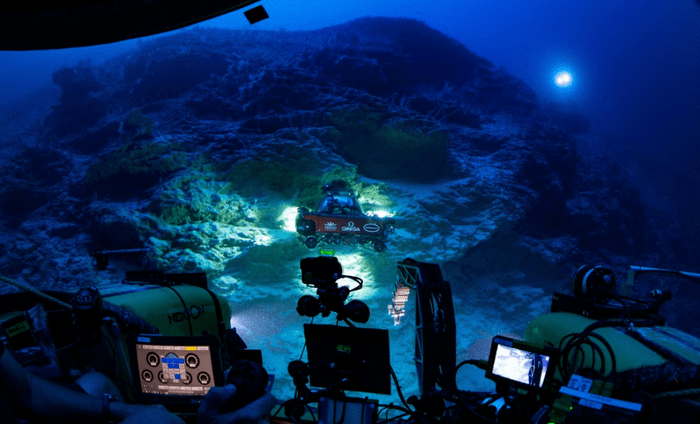Some 500 meters (1,640 feet) beneath the waves of the Indian Ocean, scientists have discovered a vibrant new ecosystem, bustling with predatory sharks, schools of fish, and teeny aquatic organisms.
The “oasis of life” was recently found near the Maldives during an expedition by the Nekton Maldives Mission involving the Government of Maldives, the non-profit group Nekton, and the University of Oxford.
With the help of the Omega Seamaster II mini-submarine, the research team detailed this distinct new ecosystem by collecting biological samples, recording video footage, and mapping the area using sonar.
Their work focused on the Satho Raha seamount, an extinct volcano that’s created a vast underwater mountain approximately 15 nautical miles in circumference.

The Omega Seamaster II submersible takes a look at the ecosystem. Image credit: Nekton Maldives Mission (c) Nekton 2022
The ecosystem that lives here is especially unusual because its swarms of small organisms, known as micro-nekton, appear to be trapped at a depth around the 500 meters (1,640 feet) mark. The micro-nekton typically migrate down deep at dawn but here, they do not descend any further than 500 meters into the waters.
The small organisms will gather here, creating a biodiversity hotspot that attracts a host of larger predators, including tuna, tiger sharks, gill sharks, sand tiger sharks, dogfish, gulper sharks, scalloped hammerhead sharks, silky sharks, and bramble sharks.
However, many of the finer details of this so-called “Trapping Zone” are unclear.
“We’re particularly intrigued at this depth – why is this occurring? Is this something that’s specific at 500 metres, does this life go even deeper, what is this transition, what is there and why? That’s our critical question we need to ask next. Why are we seeing the patterns that we have observed on this expedition? This will enable us to understand the deep ocean in much better terms,” Lucy Woodall, Associate Professor of Marine Biology at the University of Oxford and Principal Scientist at Nekton, said in a statement.
Tourism and fishing lie at the heart of the Maldivian economy, so understanding why fish flock to this area is of huge importance. Ultimately, the data from this research will be used to inform the creation of protected marine areas that will ensure the ecosystem continues to survive and thrive.
“The discovery of ‘The Trapping Zone’ and the oasis of life in the depths surrounding the Maldives provides us with critical new knowledge that further supports our conservation commitments and sustainable ocean management, and almost certainly support fisheries and tourism”, remarked President of the Maldives H.E Ibrahim Mohamed Solih.
Source Link: New "Oasis Of Life" Discovered Deep In The Indian Ocean